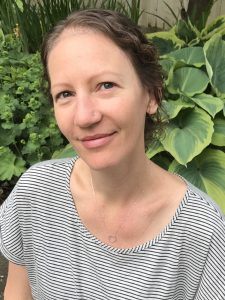 Research Oceanographer
Research Oceanographer
Northwest Fisheries Science Center
NOAA Fisheries, U.S. Department of Commerce
stephanie.moore@noaa.gov
“I believe that healthy people need healthy oceans.”
Growing up in Australia and surrounded by water, Stephanie Moore understood the intimate and inextricable connection between the oceans and human health. Just as the oceans can nourish and sustain, they can also harbor public health risks. Stephanie works with coastal communities to build resilience to blooms of toxic algae that restrict access to important commercial, recreational and subsistence fisheries. Her research focuses on providing early warning of toxic blooms and identifying risk reduction strategies for fishery-dependent communities, including Native American communities, many of which already face significant social and environmental health challenges that are expected to worsen as a result of climate change.
Stephanie Moore is a Research Oceanographer at the National Oceanic and Atmospheric Administration, National Marine Fisheries Service, Northwest Fisheries Science Center. Stephanie earned her BSc in marine biological environments (2000) and PhD in biological science (2005) at the University of New South Wales in Australia. She completed postdoctoral training at the University of Washington and the University Corporation for Atmospheric Research.
Fellowship Project: Identifying community needs and developing emergency response strategies for coastal fishing communities impacted by harmful algal blooms.
The human dimensions of harmful algal blooms are becoming more apparent as they increase in frequency, magnitude and geographic scope. This includes human illness and mortality associated with consuming seafood contaminated with toxins as well as economic losses associated with lost fisheries landings and tourism revenue, food insecurity from loss of subsistence harvest activities, disruption of cultural practices, and loss of community identity and social interactions tied to coastal resource use.
Preparing coastal communities for emerging and growing hazardous bloom events is key to reducing their impacts. Stephanie conducted research to document and understand the social, cultural and economic impacts experienced by coastal communities during a massive bloom along the US West Coast in 2015. The bloom produced record-breaking levels of toxin, shutting down the lucrative Dungeness crab and popular razor clam fisheries and generating an economic shock for coastal communities. Stephanie and her research team worked to identify ways to build resilience to future bloom events so that communities can maintain their quality of life, valued customs, and economic industries.
This information is accurate as of the fellowship year indicated for each fellow.